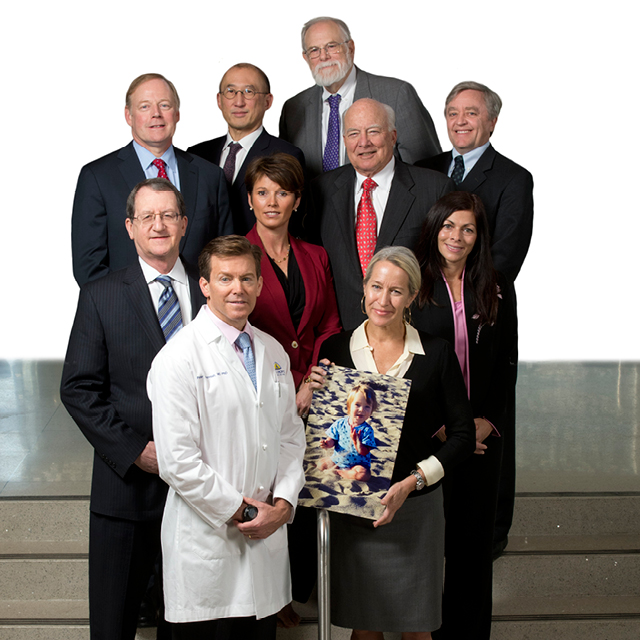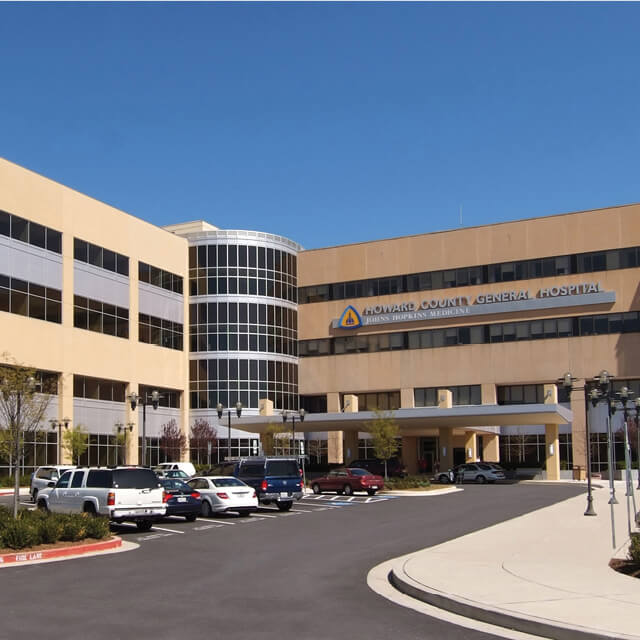When the Armstrong Institute for Patient Safety and Quality recently commemorated its 10th anniversary, dozens of faculty and staff members gathered via Zoom to thank the institute’s namesake donors, highlight achievements and current projects, and look toward the future.
Created with a $10 million gift from C. Michael Armstrong, former chairman of the Johns Hopkins Medicine board of trustees, and his wife, S. Anne Armstrong, the institute’s goals include creating a culture of accountability and transparency to prevent medical errors, improve clinical outcomes and eliminate health care disparities.
The Armstrong Institute has worked toward these goals through a number of initiatives, including:
- “Clinical communities,” groups of specialized front-line providers from across Johns Hopkins Medicine who evaluate safety problems, determine the best ways to solve them and share those best practices with workplace peers and local unit safety teams. One such initiative helped reduce unnecessary blood transfusions, serving as a national model and saving more than $4 million a year.
- Enhanced recovery after surgery (ERAS) protocols that help patients go home sooner and have better recovery after surgery. The program has grown to 20 surgical pathways serving more than 3,000 patients at Johns Hopkins.
- The comprehensive unit-based safety program (CUSP), which gives caregivers tools and support to address problems such as hospital-acquired infections, medication administration errors or communication breakdowns.
- RISE (Resilience in Stressful Events), which delivers 24/7 peer support to health care workers coping with the death of patients and other stressful events.
“We’re working hard on learning how to deliver uniform, high-quality care across our system,” says Allen Kachalia, director of the Armstrong Institute. “The attention that’s given to quality and safety speaks to how much Johns Hopkins prioritizes delivering the best possible care and getting it right every time.” The institute has about 225 faculty and staff members.
The Armstrongs, touched by the number of institute employees who gathered to thank them and present their work, beamed with delight over a decade of accomplishments.
“Over the 10 years I’ve interacted with the institute, I’m so very proud of what it has been able to achieve,” Michael Armstrong said. “It works not only efficiently, but productively, and is making a difference.”
The impetus for transforming patient safety at Johns Hopkins began in 2001, when the institution reeled from two tragic deaths. First came the loss of 18-month-old Josie King, who died at Johns Hopkins Children’s Center due to avoidable medical errors. Then, a healthy 24-year-old research technician, Ellen Roche, died after volunteering to participate in a research study.
The aftermath inspired the culture change of accountability that advanced patient safety. But it wasn’t until Michael Armstrong’s own subsequent brush with medical mistakes — including a delayed leukemia diagnosis from the New England Executive Health Program and then a serious post-chemotherapy infection at UCLA Health in the early 1990s — that the institute that bears his and his wife’s name was founded. After completing treatment for another bout of cancer in 2009, he vowed to work for patient safety, donating $10 million to Johns Hopkins in 2011.
Originally led by former Johns Hopkins anesthesiologist and critical care physician Peter Pronovost, known for implementing checklists of patient safety procedures credited with saving numerous lives, the institute has trained more than 280 leaders through the Armstrong Institute Patient Safety and Quality Leadership Academy. It has designed and implemented large-scale quality and safety improvement projects at the state and national levels: Hundreds of CUSP teams have been organized in hospitals all over the world and in more than 1,000 American intensive care units, while RISE has trained more than 50 other organizations in its methods.
Centers of Excellence
At the virtual anniversary celebration, Ayse Gurses, founding director of the Armstrong Institute’s Center for Health and Human Factors, spoke about reengineering health care processes to improve health care worker safety and patient safety, and to build in evidence-based care. Her team has studied and developed methods for better cleaning of inpatient rooms to reduce infections, improving medication management at home when patients transition out of the hospital, and operating room processes such as patient handoffs, care transitions and medication administration.
A current project concerns studying airflow and aerosol movement in the operating room, as well as how clinical work contributes to aerosol movement during surgery, a growing concern during the COVID-19 pandemic. The center is studying this in partnership with the Centers for Disease Control and Prevention’s Project Firstline, an infection control training initiative, and in collaboration with the Johns Hopkins University Applied Physics Lab.
Without research on these subjects, it is not possible to develop evidence-based guidelines to protect patients and health care workers from respiratory infections, Gurses says. The CDC is looking to Johns Hopkins to advance this science and identify barriers to and strategies for safe airflow management, which will inform future national and international guidelines.
The center is one of the Armstrong Institute’s three centers of excellence. The Center for Engagement and Patient-Centered Innovations works to improve patient outcomes through research projects around patient and family involvement while the Center for Diagnostic Excellence, created with a $5 million gift from Armstrong, aims to eliminate preventable harm from diagnostic error and reduce waste in diagnostic assessment.
Improving Stroke Diagnosis and Looking Out for Providers
As the Armstrong Institute turned 10, the Center for Diagnostic Excellence celebrated its five-year anniversary during the Zoom call.
Center director David Newman-Toker, who also heads the Division of Neuro-Visual and Vestibular Disorders, talked about the center’s accomplishments, including helping Johns Hopkins emergency departments dramatically increase the identification of strokes, reducing inappropriate CT scan use by 96%, securing $10 million in grant funding and contributing to more than 35 scientific publications.
(More than 1 million people in the U.S. suffer a stroke or pre-stroke event every year, according to the Center for Diagnostic Excellence. Minor, early strokes are missed 30% to 50% of the time when patients have symptoms such as dizziness, vertigo and headaches that are diagnosed as less serious problems.)
A highly sensitive test developed by Newman-Toker and his colleagues can detect stroke with great accuracy. Johns Hopkins offers a “Tele-Dizzy” program in which patients who present with dizziness and other possible signs of stroke in the emergency department are outfitted with portable video-oculography goggles. These goggles gather data on eye movements, allowing Johns Hopkins experts to determine if a stroke is present based on the test result.
Allen Kachalia says the Armstrong Institute is also finding ways to use artificial intelligence to improve diagnosis and risk assessment. Already underway is a partnership between the institute and Johns Hopkins’ Precision Analytics Platform that combines clinical data with information from a wide range of other sources to identify the greatest safety risks in care delivery.
As Armstrong Institute faculty work toward improving diagnosis and preventing infection, others address the often-unseen hardships providers experience. Albert Wu, professor of medicine, is co-founder of RISE, which typically supports 100 health workers a month, a need that quadrupled at its peak during the pandemic.
“The role that we play is to provide psychological first aid to help people get back into a comfortable zone,” Wu says.
RISE has trained 51 organizations, including hospitals, provider groups and one nursing school, in its stress-relieving methods. To expand its scope, it is partnering with the Maryland Patient Safety Center, a not-for-profit organization that promotes patient safety and equitable health care. In addition, RISE is working to build a physical center with a “recharging room” in The Johns Hopkins Hospital where staff members will be able to relax and schedule RISE appointments.



